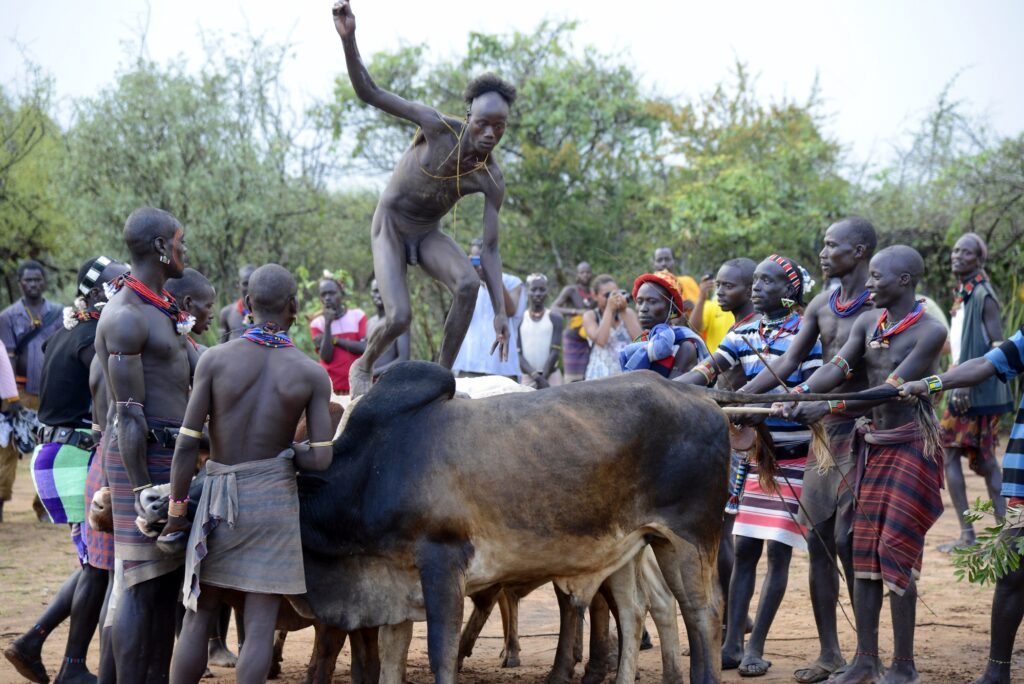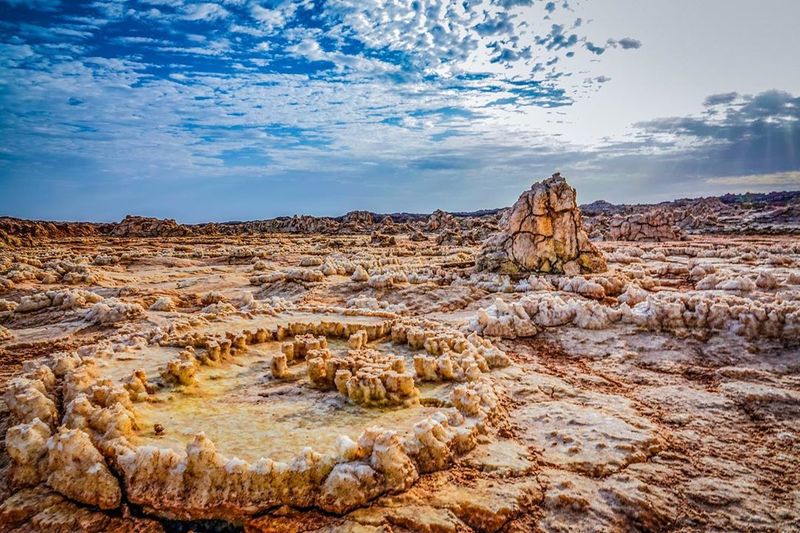Have you ever considered immersing yourself in one of the most vibrant melting pots of Ethiopia’s diverse cultures? Would you like to pose for a photo with the lip plate-wearing Mursi women or young Karo boys with ash-painted faces? If you nod to these questions, then you should take one of the most exciting trips of your life to the Omo Valley in southwestern Ethiopia.
This UNESCO-registered World Heritage Site boasts an array of mind-blowing attractions which exceed your expectations! Here is a brief to-do list for your trip to the Omo Valley.
Meet the lip-plated Mursi women
In the village of the Mursi tribe, you will be met with the uncommon sight of women wearing lip plates, which you may have seen in tourism posters. Mursi women get their lower lip cut at the age of 15 or 16 and wear the plates after the wound has healed, as a symbol of beauty and initiation into womanhood.
Bull-jumping ceremony of the Hamar
While the Mursi tribe are known for their lip plates, the Hamar tribe are famous for their bull-jumping tradition. Boys prove their transition from boyhood to manhood by running on the backs of ten bulls. Held around October and November every year, the bull jumping ceremony is a core tradition of the Hamar tribe and a show of courage for boys.
Raft on the Omo River
The Omo River will give you the ultimate rafting experience if you enjoy wild, daring adventures. Gliding through the whitewater of the river, you will also enjoy the sight of hippos and crocodiles basking in the sunshine. Baboons also have habitats nearby, and you will likely hear them barking from their shelters.
Watch Donga tournament
The Donga tournament is definitely one of the wildest, heart-freezing experiences you will ever have as a tourist. Males from the local tribe challenge themselves to the stick fighting tournament surrounded by cheering spectators. The winner becomes a local chief and gets a chance to get married.
Visit Mago and Omo Parks
In Omo national park, which is a UNESCO heritage site, you will enjoy a wide variety of wildlife including Burchell’s Zebra, large herds of Buffalo, Beisa Oryx, and Lelwel Hartebeest, among others. Across the Omo national park is the Mago national park where African lions, giraffe, greater kudu, and warthog have made their habitat.
Visit the tribal villages
Tribes in the Omo Valley are so friendly that they make you feel at home throughout your stay. Despite the language barrier, you will enjoy spending time with them. The Aari tribe, who have seamlessly blending their traditions with a modern lifestyle, will make your stay worthwhile. You will also be mesmerized by the hospitality of the Karo tribe, who are famous for their white chalk-painted bodies.
Shopping in the local markets
The tribes in the Omo Valley have weekday markets such as Kako, Mon, Ari, and Banna in addition to Saturday markets. Visiting the markets is an opportunity for you to buy something that reminds of you the Valley long after you bid farewell. Jewelry, wooden vessels, and other handicrafts are available for buyers to grab.
How to get to the Omo valley
The Omo Valley lies some 800km from Addis Ababa. A flight to Arbaminch or Jinka towns and a few hours’ drive will get you to the heart of the Valley. You can also drive from Addis through the famous Bale Mountains.
Accommodation
There are many lodges in the Omo Valley. They are basic and clean, but you may not get reliable hot water or power supply. If you enjoy camping, you can stay in one of the exclusive tented camps in the Omo, including Lale’s Camp.
Best time to visit
Before you set out to visit the Omo Valley, you should think well about your schedule. There are villages in the valley that are not accessible during the rainy season due to a lack of asphalt roads. So, the best time to visit is from the end of June to September or from November until early March.











